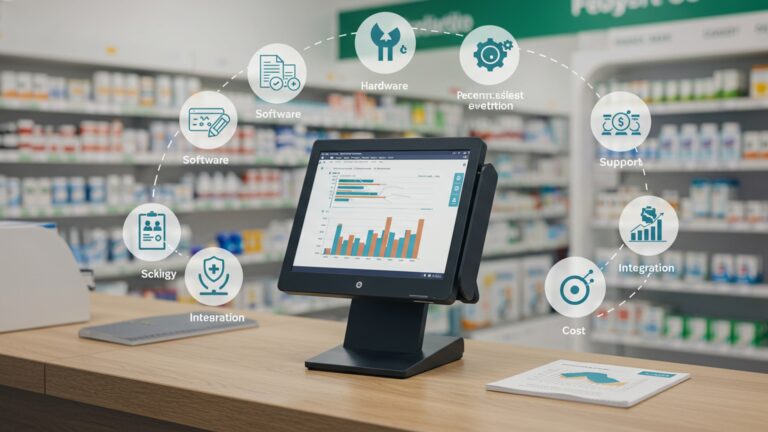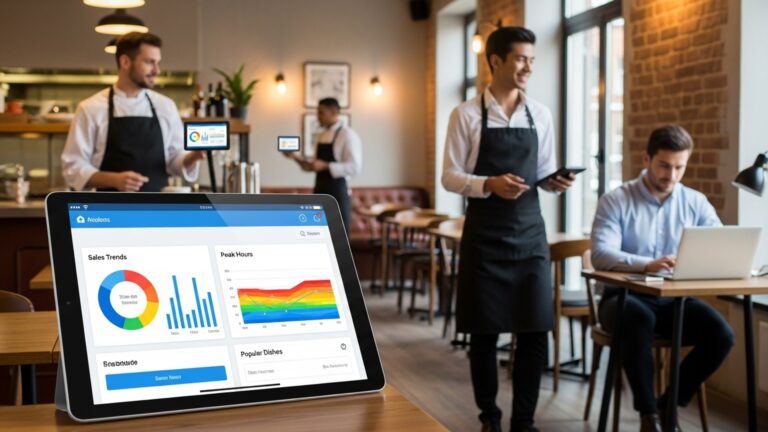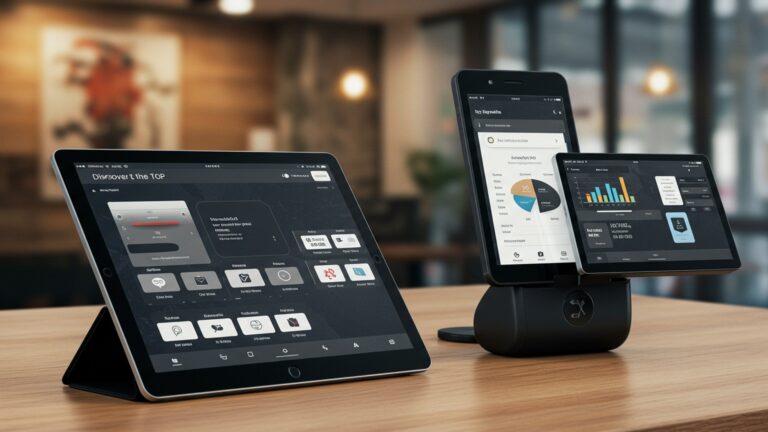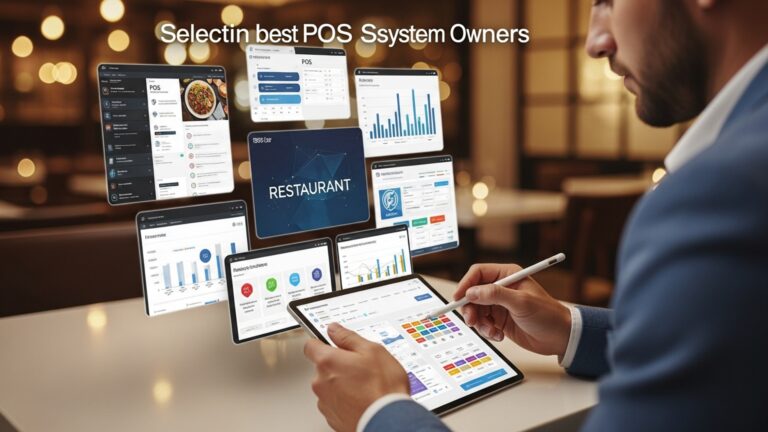Learn How to Maximize Pharmacy Billing Software Efficiency 5 Key Steps
Pharmacy operations today face unprecedented pressures from evolving payer models and intricate prior authorization requirements, frequently leading to significant claim denials. An inefficient pharmacy billing software system directly impacts a pharmacy’s financial health, extending accounts receivable cycles and diverting valuable staff time from patient care to manual claim corrections. Optimizing your billing workflow is no longer just about processing claims; it’s a strategic imperative that minimizes the financial drain of rejected scripts and maximizes reimbursement. Real-time adjudication capabilities and robust reporting features, for example, demonstrate how modern software can transform revenue cycles. By focusing on key operational areas, pharmacies can unlock substantial gains in efficiency and profitability, directly addressing the complexities of the current healthcare landscape.
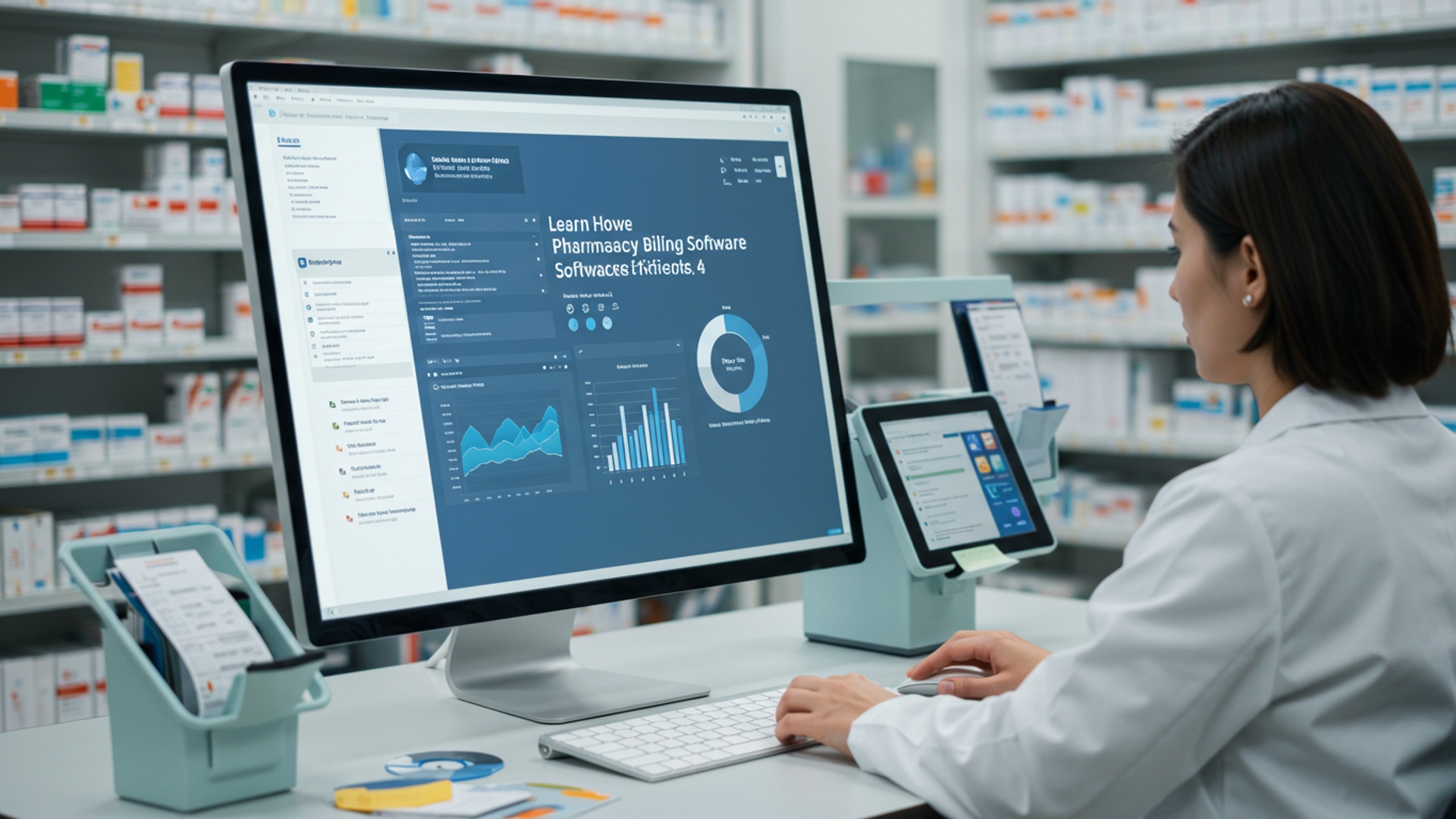
Understanding the Core of Pharmacy Billing Software
At the heart of every efficient pharmacy operation lies robust pharmacy billing software. This critical technology is far more than just a tool for generating invoices; it’s the backbone that supports revenue cycle management, ensures regulatory compliance. streamlines complex administrative tasks. Essentially, pharmacy billing software automates the process of submitting claims to insurance companies and government payers, tracking payments, managing denials. reconciling accounts. It handles everything from patient demographics and prescription details to formulary checks, prior authorizations. complex pricing structures.
For independent pharmacies and large chains alike, maximizing the efficiency of this software is paramount. An optimized system translates directly into reduced administrative burden, faster reimbursement cycles, fewer claim rejections. ultimately, improved financial health. It moves a pharmacy from reactive problem-solving to proactive management, allowing pharmacists and their teams to focus more on patient care and less on bureaucratic hurdles.
Step 1: Master Initial Setup and Ongoing Configuration
The foundation of an efficient pharmacy billing software system is its initial setup and subsequent configuration. Many pharmacies overlook the critical importance of this phase, leading to inefficiencies down the line. A properly configured system reflects your specific operational workflow, payer contracts. state regulations.
Key Configuration Areas:
- Payer Databases
- Drug Formularies and Pricing
- User Roles and Permissions
- Reporting Parameters
Ensure all insurance plans, including commercial, Medicare Part D, Medicaid. workers’ compensation, are accurately entered with their specific billing rules, BINs, PCNs. group numbers. Outdated payer data is a leading cause of claim rejections.
Regularly update drug formularies, average wholesale prices (AWP), maximum allowable cost (MAC). other pricing benchmarks. This impacts both claim submission and patient out-of-pocket costs.
Define clear user roles and permissions to ensure data integrity and security. Not every team member needs access to every function. This also streamlines workflow by presenting only relevant options to each user.
Customize reporting templates to capture key performance indicators (KPIs) relevant to your pharmacy, such as claim rejection rates, reimbursement timelines. inventory turns.
Real-world Application:
Consider a small independent pharmacy, “MediCare Rx.” Initially, they struggled with a high volume of claim rejections, primarily due to incorrect payer IDs or outdated formulary data. After a dedicated review of their pharmacy billing software‘s configuration, they discovered several payer entries had incorrect BIN/PCN combinations. By meticulously updating these details and subscribing to automated formulary updates provided by their software vendor, MediCare Rx saw a 30% reduction in first-pass claim rejections within three months. This wasn’t about a new feature. about perfecting the existing setup.
Step 2: Implement Comprehensive Training and Continuous Skill Enhancement
Even the most sophisticated pharmacy billing software is only as effective as the people using it. Inadequate training is a major bottleneck to efficiency. Staff members who are not fully proficient with the software’s capabilities will inevitably take longer to process claims, make more errors. underutilize powerful features designed to save time.
Training Best Practices:
- Onboarding Programs
- Regular Refresher Courses
- Specialized Training
- Utilize Vendor Resources
Develop a structured training program for new hires that covers all relevant aspects of the pharmacy billing software, from basic data entry to advanced claim resolution.
Conduct periodic refresher training for all staff, especially when software updates are rolled out or new features are introduced. This ensures everyone stays current and reinforces best practices.
Provide advanced training for specific roles, such as pharmacy technicians responsible for prior authorizations or billing specialists handling complex appeals.
Most pharmacy billing software vendors offer extensive training modules, webinars. support documentation. Leverage these resources to their fullest extent.
Comparison: Manual vs. Automated Training
| Aspect | Manual, Ad-Hoc Training | Structured, Automated Training Programs |
|---|---|---|
| Consistency | Highly inconsistent; depends on individual trainers. | Consistent quality and content delivery. |
| Comprehensiveness | Often misses key features or best practices. | Covers all relevant modules and workflows. |
| Time Investment | Significant time taken from experienced staff for repetitive training. | Reduces senior staff burden, new hires learn at their pace. |
| Error Rate | Higher likelihood of user errors due to incomplete understanding. | Lower error rates due to thorough foundational knowledge. |
| Adaptability | Difficult to update with new software features. | Easily updated to reflect software changes and industry shifts. |
Step 3: Automate Workflows and Leverage Integrations
Modern pharmacy billing software is designed with automation capabilities to minimize manual intervention and reduce human error. Fully utilizing these features and integrating with other pharmacy systems can dramatically boost efficiency.
Automation Opportunities:
- Automated Claim Submission
- Eligibility Checks
- Prior Authorization (PA) Support
- Remittance Posting
Configure the software to automatically submit claims immediately after prescription dispensing, reducing delays and improving cash flow.
Implement real-time eligibility verification to confirm patient insurance status before dispensing. This proactive step prevents denials due to inactive coverage.
Many systems offer integrated PA workflows, streamlining the process of requesting and tracking approvals from payers. Some even connect directly to electronic PA portals.
Automate the posting of electronic remittance advice (ERA) to quickly reconcile payments and identify discrepancies.
Strategic Integrations:
Integrating your pharmacy billing software with other critical systems creates a seamless data flow:
- Prescription Management System (PMS)
- Electronic Health Records (EHR) / E-Prescribing
- Inventory Management
Essential for transferring prescription data, patient demographics. dispensing insights directly into the billing module.
Integrations here can provide richer patient clinical data, supporting medical necessity documentation and reducing data entry.
Link billing to inventory to track drug costs against reimbursement, aiding in profitability analysis and stock management.
Example of Automated Workflow (Pseudo-code for illustrative purposes):
FUNCTION ProcessPrescriptionForBilling(prescriptionDetails, patientInfo) // Step 1: Real-time Eligibility Check IF NOT CheckPatientEligibility(patientInfo. InsuranceID) THEN LogError("Eligibility check failed for patient " + patientInfo. PatientName) NOTIFY PharmacistForManualReview(patientInfo) RETURN END IF // Step 2: Formulary Check and Prior Authorization (if needed) IF RequiresPriorAuthorization(prescriptionDetails. DrugCode, patientInfo. InsurancePlan) THEN INITIATE PriorAuthorizationWorkflow(prescriptionDetails, patientInfo) LogAction("Prior Authorization initiated for " + prescriptionDetails. DrugName) RETURN // Wait for PA approval END IF // Step 3: Automated Claim Generation and Submission CLAIM = GENERATE_CLAIM(prescriptionDetails, patientInfo, eligibilityData) SUBMIT_CLAIM_ELECTRONICALLY(CLAIM) LogAction("Claim " + CLAIM. ID + " submitted for " + prescriptionDetails. DrugName) // Step 4: Track Claim Status SET_CLAIM_STATUS(CLAIM. ID, "Submitted") SET_REMINDER_FOR_FOLLOW_UP(CLAIM. ID, 7 days)
END FUNCTION
Step 4: Proactive Claim Management and Error Resolution
Even with the best automation, claim rejections will occur. The key to efficiency is not just preventing them. also managing and resolving them proactively. A robust pharmacy billing software should offer tools for denial management.
Strategies for Proactive Management:
- Real-time Rejection Alerts
- Error Code Analysis
- Claim Tracking and Follow-up
- Appeal Process Streamlining
Configure your software to provide immediate alerts for denied or rejected claims. This allows for swift correction and resubmission, minimizing delays.
interpret common denial codes. Your software should ideally categorize rejections, allowing you to identify recurring issues (e. g. , “Invalid Member ID,” “Drug Not Covered,” “Prior Authorization Required”).
Utilize the software’s claim tracking features to monitor the status of submitted claims. Implement automated reminders for follow-ups on unpaid or unresolved claims.
For claims requiring an appeal, use the software to generate necessary documentation and track the appeal’s progress.
Case Study: “City Pharmacy” and Denial Reduction
City Pharmacy faced a persistent problem with denials related to “Drug Not Covered.” Upon analyzing rejection reports from their pharmacy billing software, they found that a significant portion of these denials came from a specific, large commercial payer. They discovered the issue stemmed from not performing a thorough formulary check before dispensing when a generic alternative was available but the brand was preferred by the prescriber. By adjusting their workflow to include a mandatory, software-driven formulary check and patient counseling on alternatives for that specific payer, they reduced these particular denials by 40% within six months, saving countless hours in manual rework and appeals.
Step 5: Leverage Data Analytics and Performance Monitoring
The true power of modern pharmacy billing software lies in the data it collects. By effectively utilizing its reporting and analytics capabilities, pharmacies can gain invaluable insights into their financial health, operational efficiency. areas for improvement. This moves beyond simply processing claims to strategically optimizing the entire revenue cycle.
Key Performance Indicators (KPIs) to Monitor:
- First-Pass Resolution Rate (FPRR)
- Claim Denial Rate
- Days in Accounts Receivable (DAR)
- Payer Mix Analysis
- Reimbursement per Prescription
The percentage of claims paid on the first submission. A high FPRR indicates efficient billing processes.
The percentage of claims rejected or denied. Track this by payer, drug. reason code to identify trends.
The average number of days it takes to collect payments after a claim is submitted. Lower is better.
interpret which payers contribute most to your revenue and which have the highest denial rates.
examine profitability by drug, therapy class, or specific payer contracts.
Actionable Takeaways from Data:
- Identify Payer Issues
- Optimize Inventory
- Staff Training Needs
- Contract Negotiation
If a particular payer consistently has high denial rates for specific drugs or services, it might warrant direct engagement with that payer or a review of your contract terms.
By understanding which drugs are most profitable and frequently reimbursed, you can make more informed decisions about inventory stocking.
If certain error codes frequently appear, it may indicate a need for targeted staff training in specific areas of the pharmacy billing software.
Data on reimbursement rates and denial trends provides powerful leverage during negotiations with insurance providers.
For example, a pharmacy might use its software to extract data on claims submitted versus claims paid, broken down by payer. A simple query might look something like this (conceptual, as specific query language depends on the database):
SELECT PayerName, COUNT(ClaimID) AS TotalClaimsSubmitted, SUM(CASE WHEN Status = 'Paid' THEN 1 ELSE 0 END) AS TotalClaimsPaid, (SUM(CASE WHEN Status = 'Paid' THEN 1 ELSE 0 END) 100. 0 / COUNT(ClaimID)) AS FirstPassResolutionRate
FROM Claims
WHERE SubmissionDate BETWEEN '2023-01-01' AND '2023-03-31'
GROUP BY PayerName
ORDER BY FirstPassResolutionRate ASC;
Analyzing the results of such a query can quickly highlight underperforming payers or areas where billing protocols need adjustment. This data-driven approach transforms pharmacy billing software from a transactional tool into a strategic asset.
Conclusion
Having navigated the five crucial steps to maximizing your pharmacy billing software’s efficiency, the real leverage comes from consistent application and a proactive mindset. My personal observation, echoed across many successful practices, is that true efficiency isn’t just about the software’s capabilities. your team’s consistent engagement with features like automated reconciliation and real-time eligibility verification. I recall one pharmacy drastically reducing claim denials by simply dedicating 15 minutes daily to review their software’s denial management reports, turning potential losses into immediate actions. Embrace the current trend towards integrated systems and predictive analytics; these aren’t just buzzwords but powerful tools, a recent development enabling software to flag potential issues before they become costly denials. By committing to these practices—from rigorous staff training to leveraging advanced reporting—you’re not merely processing claims; you’re cultivating a financially robust and patient-centric practice. Your dedication to optimizing billing efficiency today directly translates into enhanced patient care and a thriving pharmacy tomorrow.
More Articles
Discover 8 Essential Tips for Optimizing Pharmacy Billing Software Use
Discover 7 Key Benefits of Pharmacy Management Software for Efficiency
Discover 7 Essential Features for Pharmacy POS Software Success Guide
How to Select the Perfect POS Billing Software for Your Business
FAQs
Why should I even bother optimizing my pharmacy billing software?
Optimizing your billing software is all about saving time and money! It leads to fewer errors, faster claim processing, quicker reimbursements. ultimately, more time for your staff to focus on patient care instead of endless administrative tasks.
What’s often the biggest challenge pharmacies face when trying to get more out of their current billing system?
A common hurdle is often a lack of comprehensive training or not fully utilizing all the features the software offers. Many users only scratch the surface of their system’s capabilities, missing out on valuable automation and efficiency tools.
How does keeping my billing software updated help improve efficiency?
Regular updates are crucial! They bring new features, essential security enhancements. critical compliance changes (like new coding requirements). Staying updated prevents issues, ensures accurate billing. keeps your system running smoothly without unexpected hiccups.
My team frequently makes data entry mistakes. What can we do to fix that based on these key steps?
Focusing on data accuracy is absolutely vital! This includes providing thorough staff training on correct entry procedures, leveraging features like real-time validation checks within the software. regularly auditing your data to catch and correct errors proactively.
Can optimizing the software really help us speed up claim submissions?
Yes, absolutely! By streamlining your workflow, utilizing automated claim scrubbing features. ensuring all necessary details is accurately captured upfront, you can significantly reduce claim rejection rates and accelerate the entire submission and reimbursement process.
What does ‘workflow optimization’ actually mean for daily pharmacy operations?
Workflow optimization means making your daily processes smoother and more logical. This could involve automating repetitive tasks, setting up clear, step-by-step procedures for claim handling, or integrating your billing software with other systems. It helps eliminate manual bottlenecks, reduces errors. frees up staff for more critical duties.
After we implement these efficiency steps, how will we know if our pharmacy billing is truly better?
You’ll want to track key performance indicators! Monitor metrics like your claim rejection rates, the average time it takes to get reimbursed, the amount of staff time spent on billing tasks. your overall revenue cycle performance. Consistent improvement in these areas will show your efforts are paying off.

